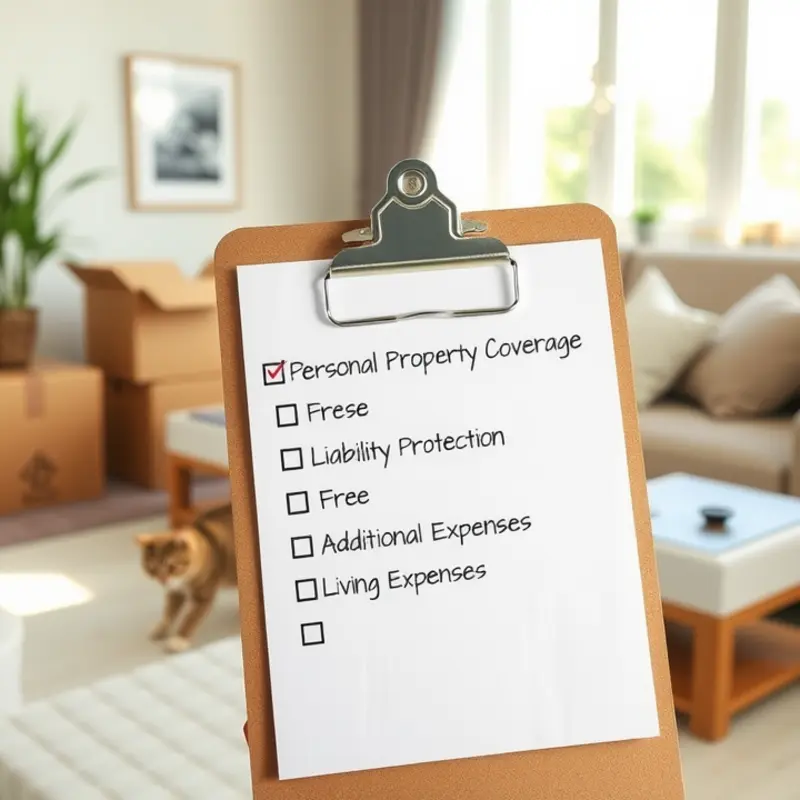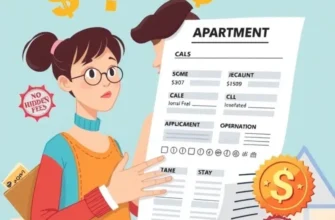So, you’ve snagged your first apartment, a cozy nest full of dreams, and maybe even a cat named Mr. Whiskers. But before you can start soaking in all the homey vibes, there’s an important question waiting for your attention: Do you have renters insurance? Picture this: a runaway pizza delivery boy crashing into your living room, or that time Mr. Whiskers knocked over the plant you thought would look great on your coffee table. Renters insurance is your safety net against such unexpected curveballs, and it’s easier than you think to get. This guide breaks down the essential checklist you need to ensure you have all bases covered when it comes to renters insurance. You’ll soon be able to sleep soundly in your bed, knowing that both you and your belongings are protected. Let’s dive into the nitty-gritty of what you really need to know.
Understanding Renters Insurance Basics

Navigating the world of renters insurance can feel like decoding a complex puzzle. Yet, comprehending its essentials is crucial for anyone aiming to protect their personal property. At its core, renters insurance is a safeguard against unexpected events, ensuring that your belongings are protected in case of disasters or mishaps. Unlike homeowners insurance, renters insurance doesn’t cover the physical building but focuses on the contents within your rented space.
For first-time renters, understanding that your landlord’s insurance policy does not extend to your personal items is vital. This means if there’s a fire, theft, or significant water damage, you are responsible for replacing your belongings unless you’re covered. Renters insurance typically includes three types of protection: personal property coverage, liability coverage, and additional living expenses.
Personal Property Coverage offers compensation for lost or damaged personal items. This includes items such as electronics, furniture, and clothing. It’s essential to accurately estimate the value of your belongings to ensure adequate coverage. Creating a home inventory list can help in assessing your needs. Consider the replacement cost value option, which reimburses the cost of buying new items rather than their depreciated worth, providing a more robust safety net.
Liability Coverage protects against potential lawsuits. If a visitor injures themselves in your apartment or you accidentally cause damage to someone else’s property, liability coverage can help you avoid significant financial loss. Depending on your lifestyle, you might want to adjust the amount of liability coverage to ensure ample protection.
Additional Living Expenses (ALE) protection covers costs associated with temporarily living elsewhere if your rental becomes uninhabitable. This can cover hotel bills, restaurant meals, and other living expenses incurred during the disruption. For families or couples, ALE coverage is invaluable, providing peace of mind that you won’t face unmanageable costs during emergencies.
An often-overlooked aspect is understanding the specific exclusions and limits within your policy. Not all disasters are covered, and there might be limits on high-value items like jewelry or collectibles. Discussing your unique situation with an insurance agent allows for tailored advice, ensuring you’re neither over nor underinsured. For additional insights on managing your rental effectively, you can explore budgeting tips for first-time renters.
Whether you’re a dynamic couple settling into your first apartment or a bustling family looking to secure your home base, renters insurance offers a fundamental layer of protection. Recognizing its importance early on can save you from substantial stress and financial strain down the line, empowering you to enjoy your rented home with confidence.
The Ultimate Renters Insurance Checklist

Renters insurance might not be the first thing that sends your heart racing with excitement, but it’s a vital guardian for your beloved stuff. So grab a pen and get ready to conquer this renters insurance checklist with confidence!
Know Your Worth
To start, determine how much coverage you really need. Take a good look around your place. Yes, that includes the quirky DIY furniture project you did last month. Consider everything from your gadgets to your wardrobe. Once you have a number in mind, fine-tune it by estimating the total value of your possessions. Remember, renters insurance isn’t just about replacing what’s been lost, but about putting your life back together.
Understand Coverage Types
You’re going to encounter two primary types of coverage: actual cash value (ACV) and replacement cost value (RCV). ACV accounts for depreciation, meaning you’ll receive what your items are worth today, not when you bought them. RCV, on the other hand, covers the cost to replace items with new ones. You may pay a bit more for RCV, but your peace of mind might just be worth it.
The Deductible Dance
Deductibles are a crucial part of any insurance policy. Select a deductible you can comfortably afford out-of-pocket. Higher deductibles usually lower your premium, but that balance between up-front costs and monthly payments is key. Setting your deductible too high could turn your wallet into a wailing alarm after a theft or loss.
Exclusions? Excuse me?
Not everything is covered under a standard renters insurance policy. Natural disasters like floods and earthquakes often require additional riders or separate policies. Review exclusions diligently to avoid surprises. You don’t want to find out during a claim that Fluffy’s damage to the living room walls is considered “uncustomary conduct.”
Personal Liability—Make Friends
Renters insurance is not just about your belongings. Most policies include personal liability coverage. This comes into play if someone gets injured in your rental or if there’s damage to the building that you’re liable for. Personal liability protection can save you from severe out-of-pocket costs later on.
Temporary Living Expenses
Consider additional living expenses (ALE) too. If a disaster renders your rental uninhabitable, ALE coverage helps with housing costs elsewhere. It’s a vital fallback plan that ensures you’re not camping in your friend’s living room longer than anyone would like.
Compare, Compare, Compare
Once you’ve mapped out your needs, it’s time to shop around. Compare quotes from multiple providers to find the plan that fits your budget and lifestyle. Customize your package by including additional coverage options for valuable items or specific natural disasters relevant to your area.
Finally, while securing protection for your stuff, don’t forget to optimize your living space as well. For those juggling limited apartment square footage, check out apartment space-saving hacks. Foiling chaos in multiple areas of your life can lead to more harmony and less drama.
A great renters insurance policy does more than shield things. It nurtures peace of mind, allowing you to enjoy your rental space—free from worries about mishaps or mayhem.
Final words
Navigating the world of renters insurance doesn’t have to feel like rocket science, especially if you’ve got a handy checklist by your side. From understanding your coverage needs to protecting against unforeseen mishaps, being proactive with renters insurance is a smart move. So whether you’re renting your first studio or settling down in a family home, remember to dot those i’s and cross those t’s. After all, you’ve worked hard for your stuff—so make sure it’s safe and sound. Here’s to peace of mind and that big sigh of relief knowing you’ve got shelter for both your dreams and your belongings.









